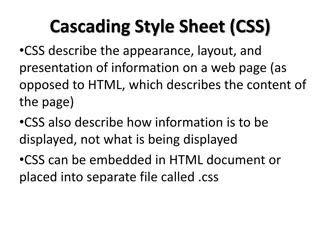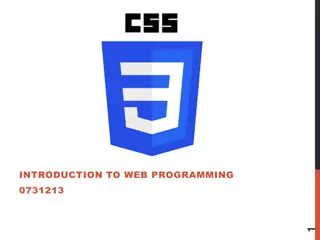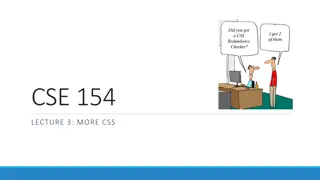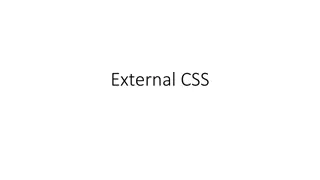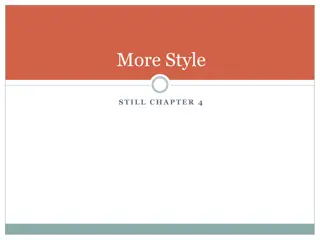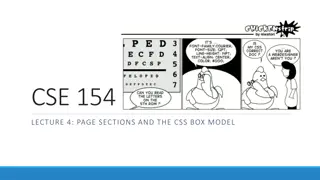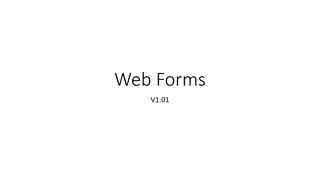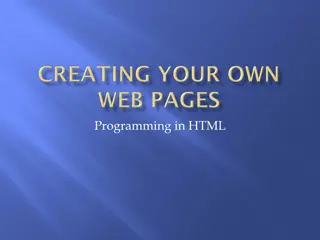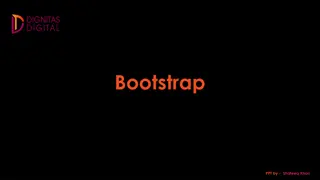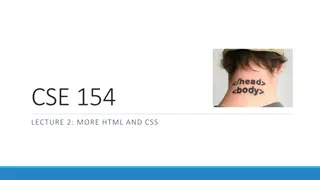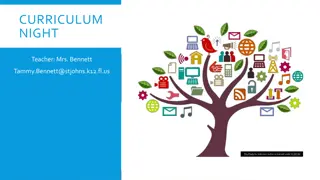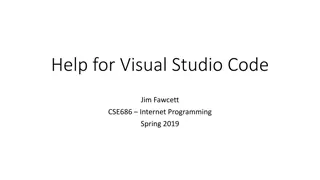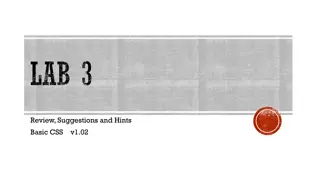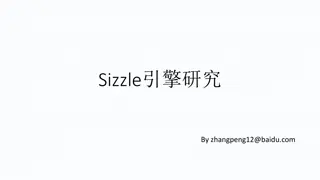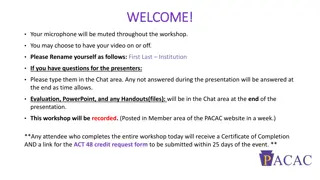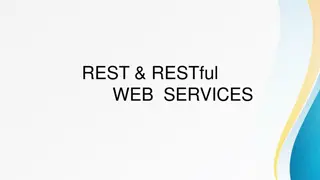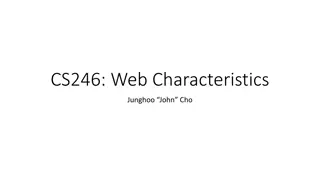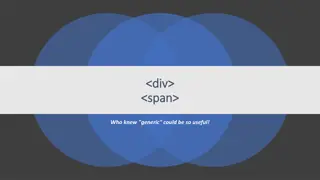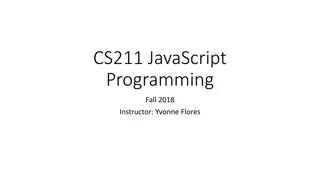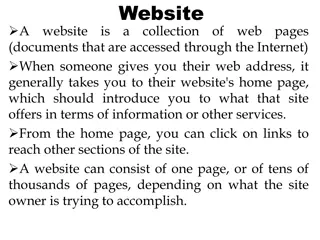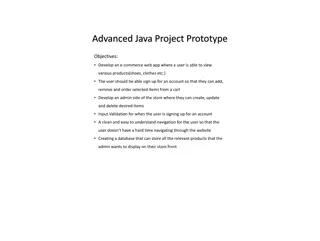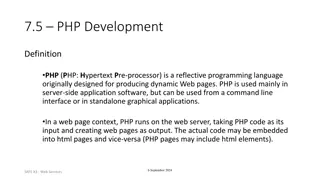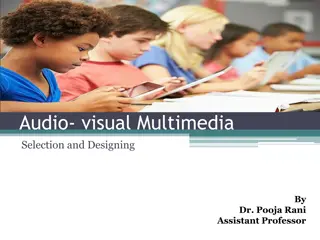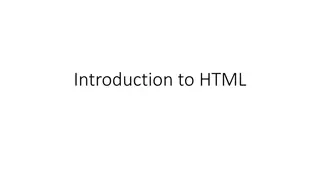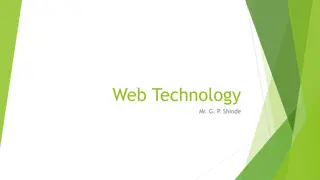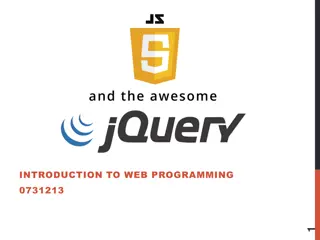Introduction to CSS and its Importance in Web Designing
Explore the world of CSS with Md. Jasim Uddin and learn the fundamentals of Cascading Style Sheets. Discover how CSS separates content from presentation, improving accessibility and flexibility in web design. Dive into styling techniques, selectors, and development tools to enhance your web projects.
Download Presentation

Please find below an Image/Link to download the presentation.
The content on the website is provided AS IS for your information and personal use only. It may not be sold, licensed, or shared on other websites without obtaining consent from the author. Download presentation by click this link. If you encounter any issues during the download, it is possible that the publisher has removed the file from their server.
E N D
Presentation Transcript
Welcome everyone to today's Presentation
Teacher introduction Md. Jasim Uddin Assistant teacher (ICT) Sarengal N. H. Fazil (degree) Madrasah Mobile : 01719816534 Email : jasimuddin534@gmail.com
CSS for Web Designing Part-01 Class XI and XII Chapter Four Time : 50 minutes
learning outcomes 1. Introduction to CSS 2. Basic of CSS 3. Advance of CSS 4
Understanding CSS (Cascading Style Sheets)
Table of Contents What is CSS? Styling with Cascading Stylesheets (CSS) Selectors and style definitions Linking HTML and CSS Fonts, Backgrounds, Borders The Box Model Alignment, Z-Index, Margin, Padding Positioning and Floating Elements Visibility, Display, Overflow CSS Development Tools 6
CSS: A New Philosophy Separate content from presentation! Content Presentation (CSS Document) (HTML document) Title Bold Lorem ipsum dolor sit amet, consectetuer adipiscing elit. Suspendisse at pede ut purus malesuada dictum. Donec vitae neque non magna aliquam dictum. Italics Indent Vestibulum et odio et ipsum accumsan accumsan. Morbi at arcu vel elit ultricies porta. Proin tortor purus, luctus non, aliquam nec, interdum vel, mi. Sed nec quam nec odio lacinia molestie. Praesent augue tortor, convallis eget, euismod nonummy, lacinia ut, risus. 7
The Resulting Page Title Lorem ipsum dolor sit amet, consectetuer adipiscing elit. Suspendisse at pede ut purus malesuada dictum. Donec vitae neque non magna aliquam dictum. Vestibulum et odio et ipsum accumsan accumsan. Morbi at arcu vel elit ultricies porta. Proin Tortor purus, luctus non, aliquam nec, interdum vel, mi. Sed nec quam nec odio lacinia molestie. Praesent augue tortor, convallis eget, euismod nonummy, lacinia ut, risus. 8
CSS Intro Styling with Cascading Stylesheets
CSS Introduction Cascading Style Sheets (CSS) Used to describe the presentation of documents Define sizes, spacing, fonts, colors, layout, etc. Improve content accessibility Improve flexibility Designed to separate presentation from content Due to CSS, all HTML presentation tags and attributes are deprecated, e.g. font, center, etc. 10
CSS Introduction (2) CSS can be applied to any XML document Not just to HTML / XHTML CSS can specify different styles for different media On-screen In print Handheld, projection, etc. even by voice or Braille-based reader 11
Why Cascading? Priority scheme determining which style rules apply to element Cascade priorities or specificity (weight) are calculated and assigned to the rules Child elements in the HTML DOM tree inherit styles from their parent Can override them Control via !important rule 12
Why Cascading? (3) Some CSS styles are inherited and some not Text-related and list-related properties are inherited - color, font-size, font-family, line-height, text-align, list-style, etc Box-related and positioning styles are not inherited - width, height, border, margin, padding, position, float, etc <a> elements do not inherit color and text- decoration 14
Style Sheets Syntax Stylesheets consist of rules, selectors, declarations, properties and values http://css.maxdesign.com.au/ Selectors are separated by commas Declarations are separated by semicolons Properties and values are separated by colons h1,h2,h3 { color: green; font-weight: bold; } 15
Selectors Selectors determine which element the rule applies to: All elements of specific type (tag) Those that mach a specific attribute (id, class) Elements may be matched depending on how they are nested in the document tree (HTML) Examples: .header a { color: green } #menu>li { padding-top: 8px } 16
Selectors (2) Three primary kinds of selectors: By tag (type selector): h1 { font-family: verdana,sans-serif; } By element id: #element_id { color: #ff0000; } By element class name (only for HTML): .myClass {border: 1px solid red} Selectors can be combined with commas: h1, .link, #top-link {font-weight: bold} This will match <h1> tags, elements with class link, and element with id top-link 17
Selectors (3) Pseudo-classes define state :hover, :visited, :active , :lang Pseudo-elements define element "parts" or are used to generate content :first-line , :before, :after a:hover { color: red; } p:first-line { text-transform: uppercase; } .title:before { content: " "; } .title:after { content: " "; } 18
Selectors (4) Match relative to element placement: p a {text-decoration: underline} This will match all <a> tags that are inside of <p> * universal selector (avoid or use with care!): p * {color: black} This will match all descendants of <p> element + selector used to match next sibling : img + .link {float:right} This will match all siblings with class name link that appear immediately after <img> tag 19
Selectors (5) > selector matches direct child nodes: p > .error {font-size: 8px} This will match all elements with class error, direct children of <p> tag [] matches tag attributes by regular expression: img[alt~=logo] {border: none} This will match all <img> tags with alt attribute containing the word logo .class1.class2 (no space) - matches elements with both (all) classes applied at the same time 20
Values in the CSS Rules Colors are set in RGB format (decimal or hex): Example: #a0a6aa = rgb(160, 166, 170) Predefined color aliases exist: black, blue, etc. Numeric values are specified in: Pixels, ems, e.g. 12px , 1.4em Points, inches, centimeters, millimeters E.g. 10pt , 1in, 1cm, 1mm Percentages, e.g. 50% Percentage of what?... Zero can be used with no unit: border: 0; 21
Default Browser Styles Browsers have default CSS styles Used when there is no CSS information or any other style information in the document Caution: default styles differ in browsers E.g. margins, paddings and font sizes differ most often and usually developers reset them * { margin: 0; padding: 0; } body, h1, p, ul, li { margin: 0; padding: 0; } 22
Reference: Google Wikipedia Mukto Path HSC ICT textbook Muktopath 23
Thank you CSS Part-2 is our Next topic Thank you once again. Jasim Uddin 24



